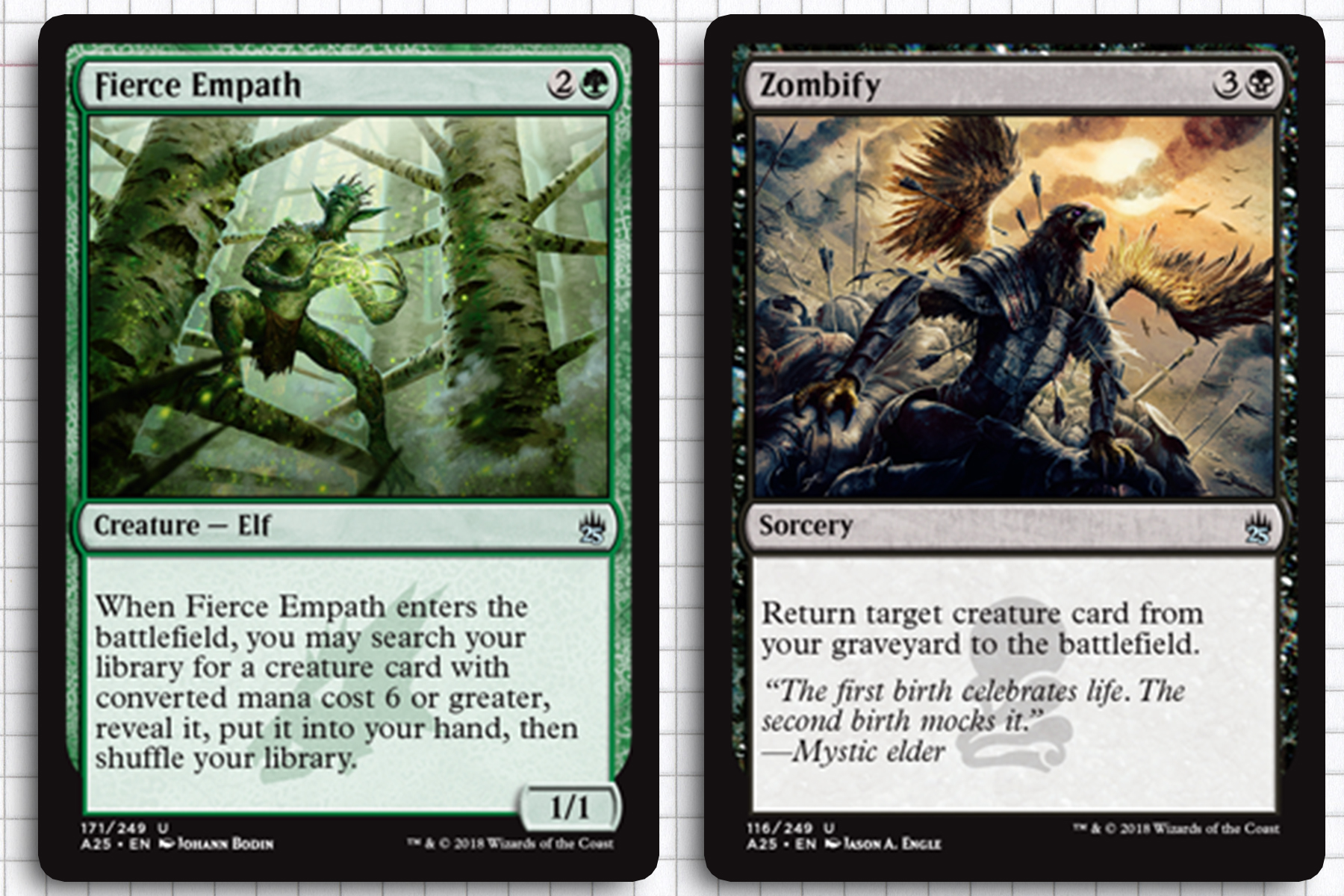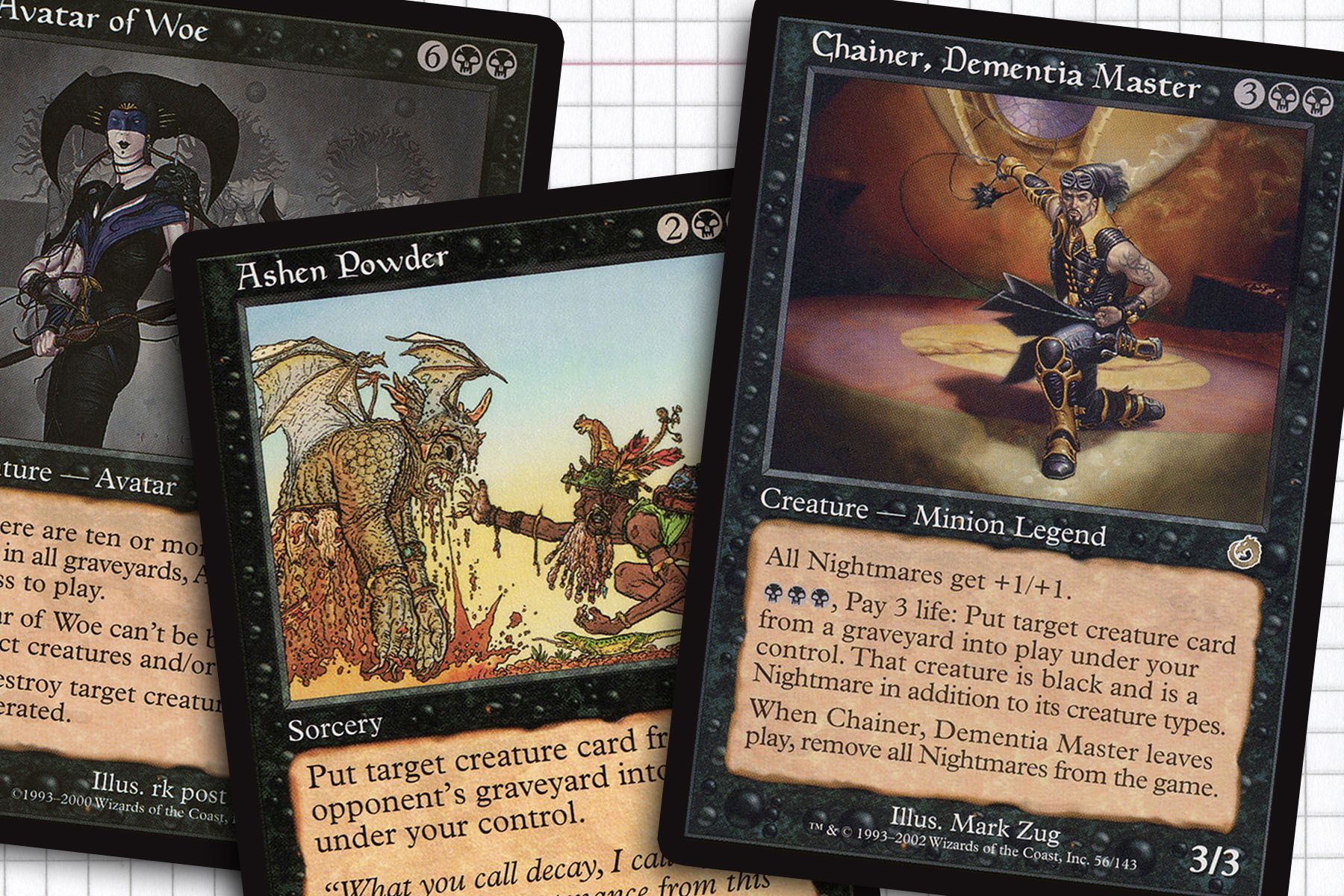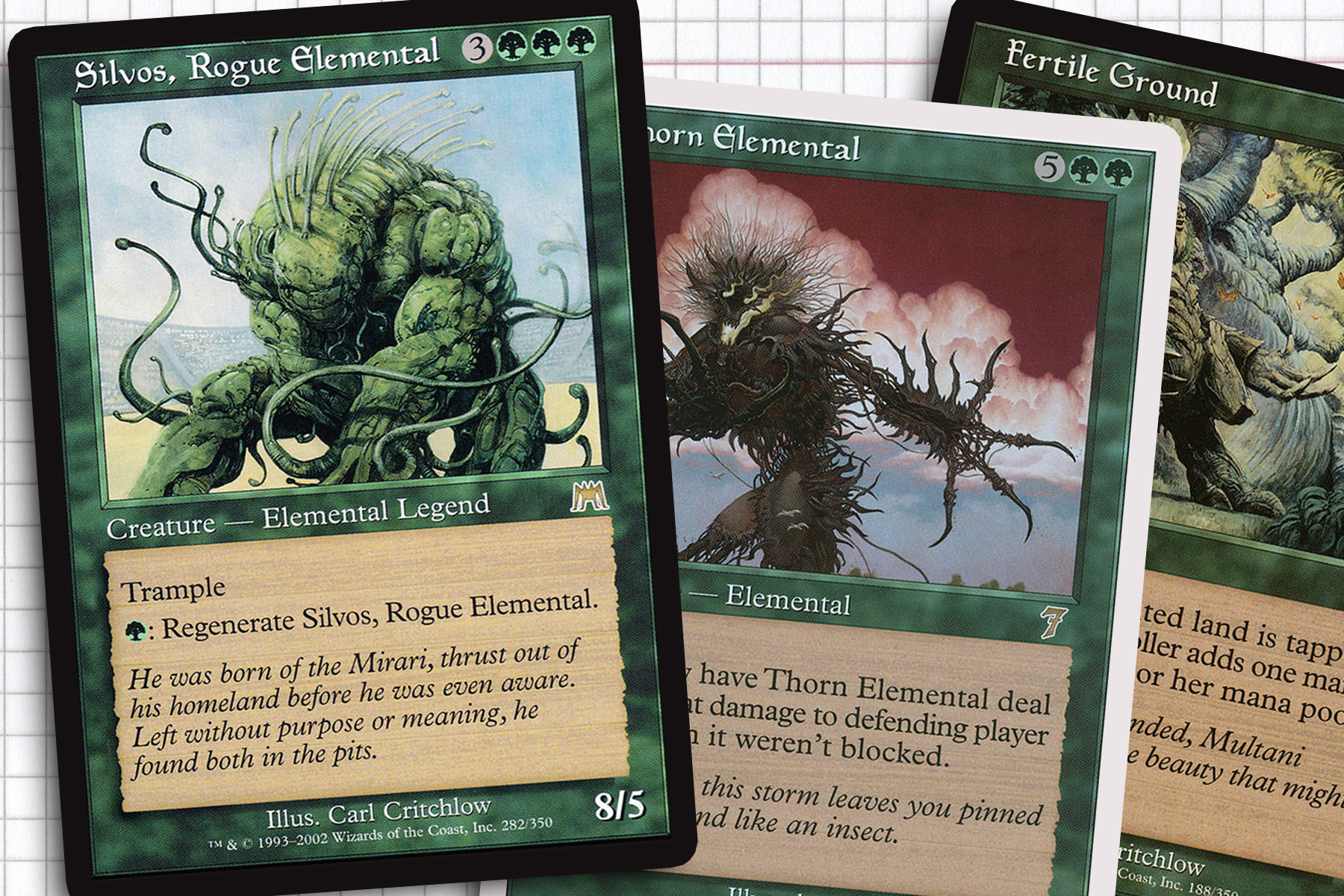On a recent episode of Game Knights Jimmy and Josh brought in Kathleen and Graham from LoadingReadyRun to play a game of Commander focused on each of their own nostalgia. It got me thinking about when I first got wind of Commander—then known as EDH—on an unassuming day in the summer of 2010. Descending into my friend Jayme’s basement, I found him and Jesse (from my Ur-Dragon article) surrounded by stacks of cards from Jayme’s collection. They had been trying to build these massive singleton decks for a new format focused on legendary creatures.
This means that Commander has been bouncing around in my head for almost half of my Magic tenure, which began just before Onslaught in 2002. This got me thinking. What kind of deck would I build to capitalize on my own nostalgia for the game? That idea was going to be the driving force for an article, one day. Then destiny came calling, in the form of a nostalgic preview from Magic’s past, which also hits me right in the nostalgia sweet spot.
My preview cards—yes, plural—are from the period of time when I started playing Magic, give or take a few months in both directions. But, they are not the same color. One is Green, while the other is Black. Nowadays this would not be much of a problem, as within a Standard environment there is typically a viable general in most of the color pairs. But in 2002 there had surprisingly never been a green/black legendary creature in Magic’s history. My only course of action was to outline two decks that will invoke my formative years of Magic, while also highlighting my two previews from Magic 25: Fierce Empath and Zombify

Before we get into my mini deck techs, let’s take a minute to admire the new art on these cards, as well as the watermarks they added for this set to inform you about their original printings. Neither loses their sense of home plane: Fierce Empath shows how the Mirari warped the biology of the elves within Wirewood, and the aven on Zombify can be seen being resurrected shortly after what looks like Kirtar’s Wrath. And for that last bit of nostalgia, Zombify still has the same flavor text from its Odyssey printing.
My aim today will be to capture my early experiences with Magic in two decks, one looking to reanimate creatures and the other winning with big creatures. I have chosen Chainer, Dementia Master as he was a flashy card from my early years that seemed nigh unbeatable once he hit play; and Silvos, Rogue Elemental, because it was one of my first legendary creatures I discovered after starting to play.
Chainer, Dementia Master

Chainer, Dementia Master probably stands out so prominently in my mind because the Odyssey block books were some of the Magic literature I absorbed. Reading the character within the pages of Chainer’s Torment gave me a very strong sense of his powers and how they translated to his cardboard self. My instinct when I was given Zombify was to build Chainer as a zombie deck, like the ones that ran rampant during Onslaught Standard. Chainer felt perfect as Zombify-meets-lord until I began to look over the creatures of early Magic and realized that what likely made that deck good at the time was a smaller subset of good creatures that saw play in constructed decks with multiple copies each.
The early years of Magic didn’t have the most powerful creatures. A shift started around Ravnica, but it wouldn’t be until the advent of planeswalkers that the need for powerful creature would be required from a design standpoint. We’ll be looking more for a smaller band of powerful creatures from the first ten years of game while tapping into the overpowered non-creature spells of this era. Dig out your Mutilate, Cabal Coffers, Dark Ritual, and Demonic Tutor, because we’re dealing in the in the dark arts today.
Right off the bat, Entomb and Buried Alive are going to be important as ways to send creatures to our graveyard. Next we’ll want to use spells like Zombify, Reanimate, and Exhume to dig our creatures up. Bonus points with Ashen Powder if anyone else has discarded something appealing into their graveyard. But what can we dig up? Two of my personal favorites would be Avatar of Woe and Visara the Dreadful, scary creatures capable of defeating opposing players or threatening creatures easily. Avatar of Woe was the kind of card that people talked about in hushed tones amongst the casual circles I played in during high school and college. At the time it was very potent and equally elusive—believe it or not, people actually had limited access to cards at one point.
Filling out our deck, I think it is important to honor Lord of the Pit, a powerhouse of a bygone era. Next, I would want Phyrexian Delver in the deck—a card I overlooked purely for the art for years—as reanimating it gets you an additional body. Ichorid is a constant threat that can get use turn after turn as your graveyard begins to fill up. We can brush off the alternate casting cost on Delraich, since sacrificing creatures means little to us. Catacomb Dragon is a dragon, and Hypnox was one of those cards that I saw in the display case at a local game store and nearly lost my mind from its apparent power. In hindsight, why was it in a display case?
Silvos, Rogue Elemental

Fierce Empath wants your deck to have big creatures. To that end, I chose Silvos, Rogue Elemental as the giant creature symbolic of the kinds of creatures I once filled all my decks with. Back in the day a good fattie was your path to victory. Creatures like Thorn Elemental were nigh unbeatable—why block it? It’s just going to hit you anyway. (A few of the more knowledgeable players maintained competitive advantage by never pointing out the holes in our logic.) This deck will be looking to use Fierce Empath, Worldly Tutor and Sylvan Tutor to search out some of the all-star creatures of 2003 casual Magic, ramping along the way.
Whereas the Chainer deck had the benefit of early Magic’s high profile spells to make its gameplan consistent, Silvos will be fighting some to keep its creatures relevant. One of my favorite creatures of this era was Avatar of Might. Tokens were a fairly popular archetype in the casual Magic of my youth, so often after finding the Avatar, I was likely to get the cost reduction. Other pieces of nostalgia to get with Fierce Empath include one of the first big creatures I’d ever seen, Crash of Rhinos. Krosan Cloudscraper, a creature so big it boggled my 15-year-old mind. And Penumbra Wurm, the first Magic card I’d ever seen before starting to play.
It’s also worth pointing out that in this era, green did not yet have access to board-wide mana doubling enchantments or artifacts—that was still squarely in red’s color pie. So while you would be able to enchant a land with something like Wild Growth or Fertile Ground, something like the last part of Mirari’s Wake wouldn’t enter mono green until Heartbeat of Spring in Champions of Kamigawa. For this deck, we’ll have to rely on mana ramp in the form of Harrow, Far Wanderings, Lay of the Land, and Rampant Growth to cast our fatties.
We do have the fortune of being able to build off of green’s early spells like Winter’s Grasp, Ice Storm and Desert Twister. This allows us to play strategies more attributed to red in the modern color pie. And since most of my selections already have trample, we want cards like Blanchwood Armor or Aspect of Wolf to alpha-strike an unsuspecting opponent. All in all, we’re going big on mana, so dust off your copy of Argothian Elder and Elvish Aberration.
Closing out this week, I wanted to thank Wizards of the Coast for sending a preview our way. When I saw that Fierce Empath and Zombify were getting reprinted in this nostalgia-inspired set, I was excited not only by the new art but the effect spotlighting each card might have for up and coming Commander players. While both have seen their share of reprints, I think they exist among a massive suite of cards that usually only get mentioned briefly when decklists or full set lists are made public. While both of these cards will not be format warping or for every green or black deck, they are basic effects that can be expanded into a theme. I hope today displayed that. Until next time, thanks all.

